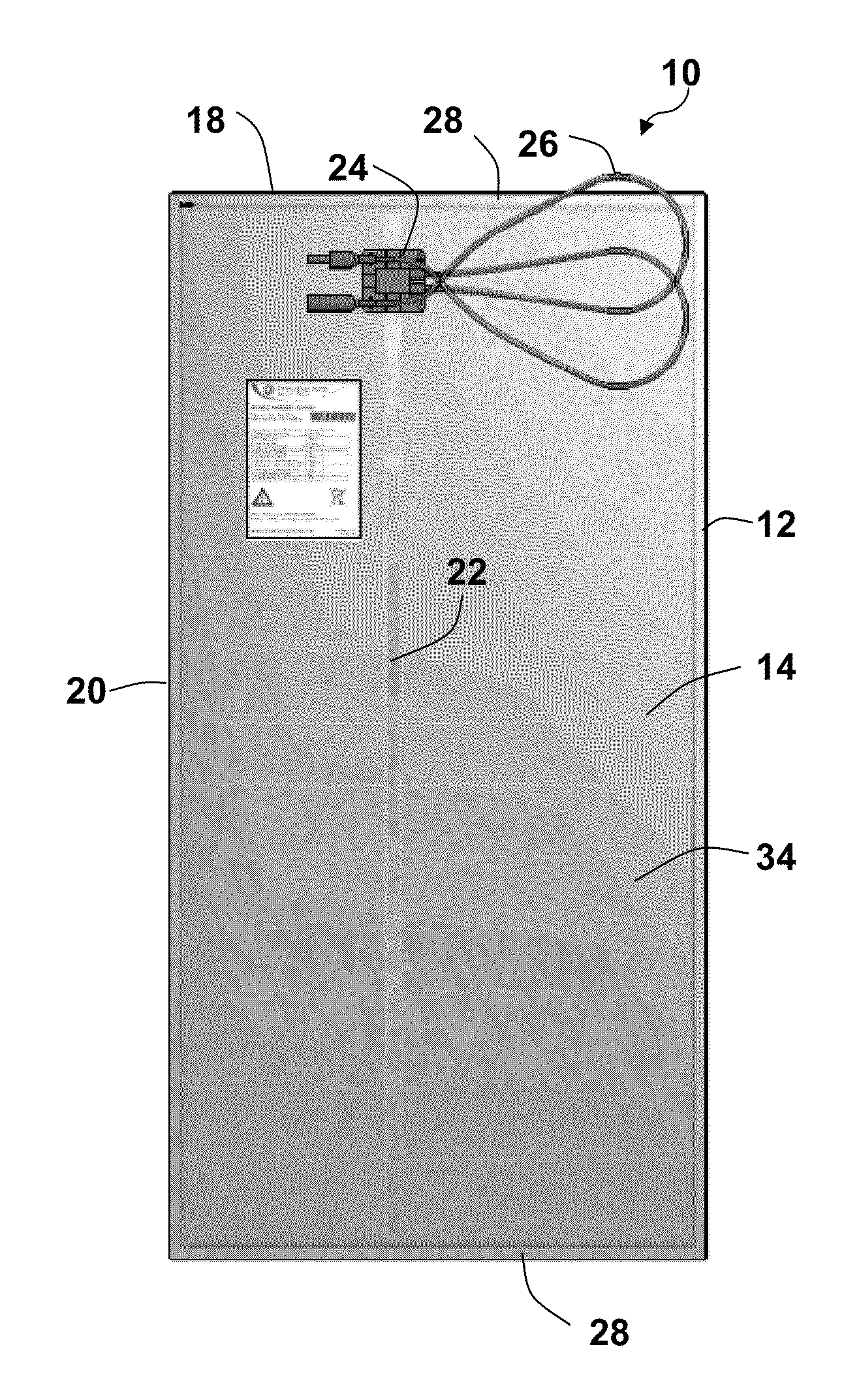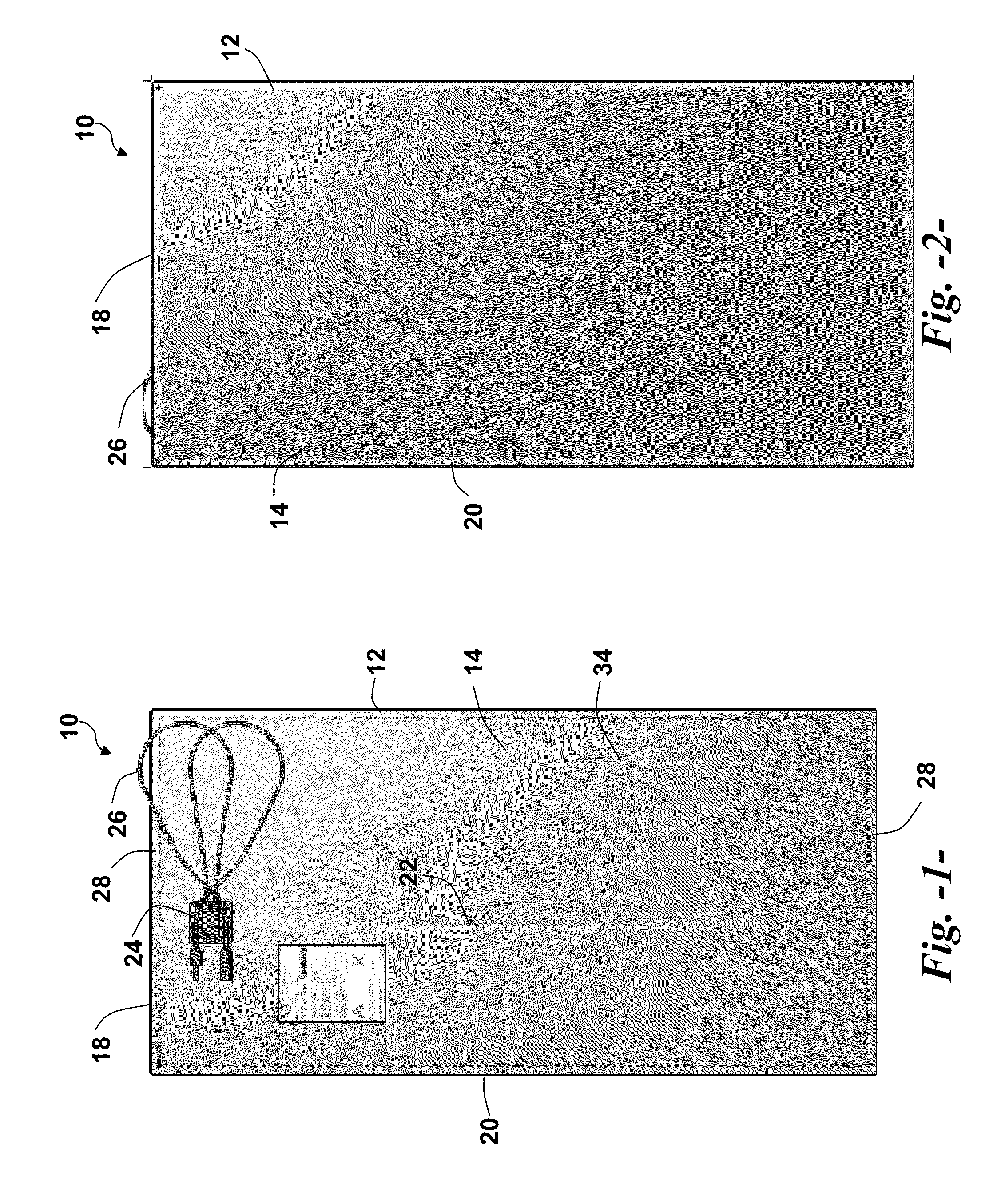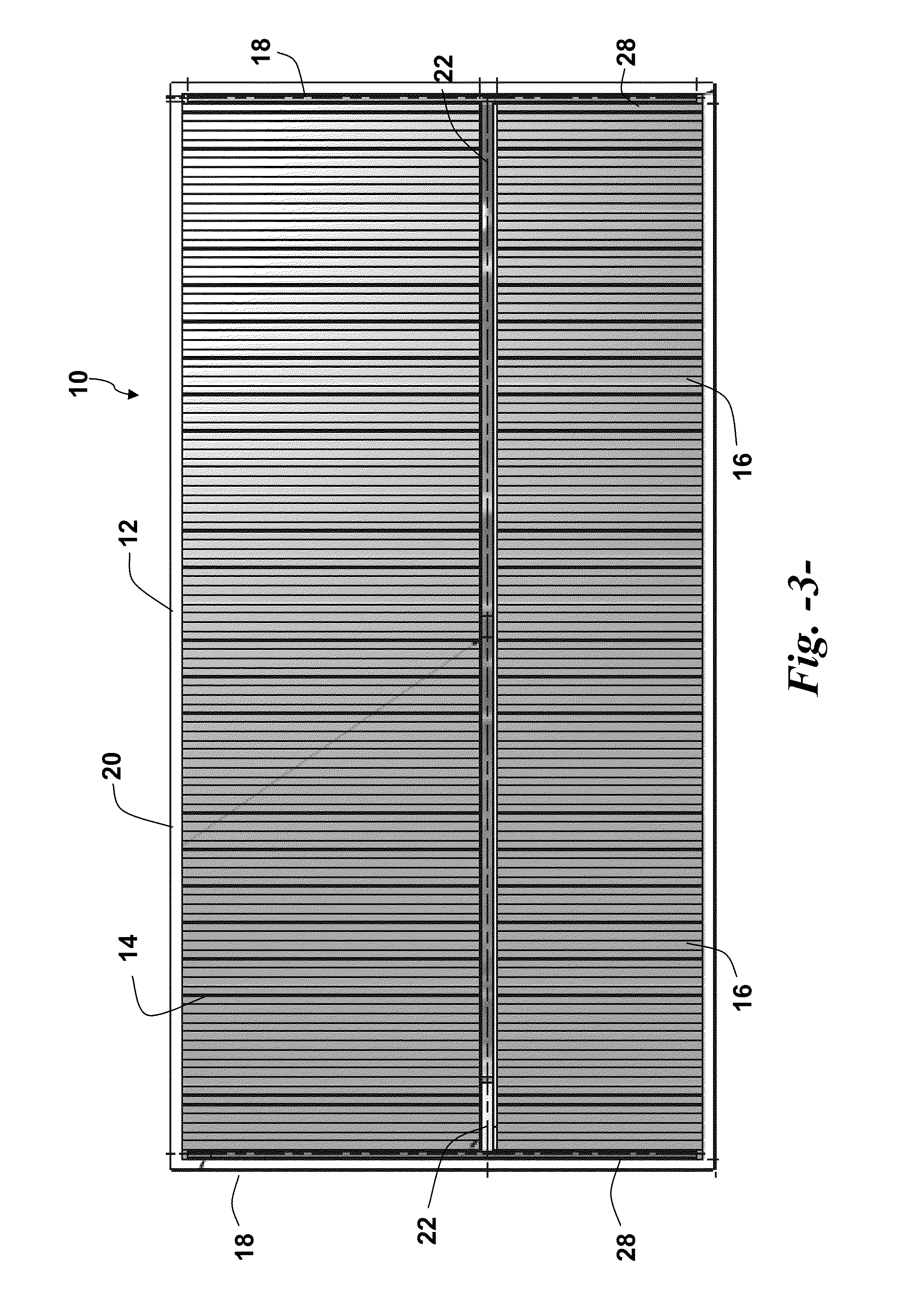Photovoltaic (PV) module with improved bus tape to foil ribbon contact
a photovoltaic module and bus tape technology, applied in the field of photovoltaic (pv) modules, can solve the problems of inability to make electrical contact, unreliable, and difficult to meet the needs of the pv module, and achieve the effect of strong, low-resistance electrical conta
- Summary
- Abstract
- Description
- Claims
- Application Information
AI Technical Summary
Benefits of technology
Problems solved by technology
Method used
Image
Examples
Embodiment Construction
[0020]Reference now will be made in detail to embodiments of the invention, one or more examples of which are illustrated in the drawings. Each example is provided by way of explanation of the invention, not limitation of the invention. In fact, it will be apparent to those skilled in the art that various modifications and variations can be made in the present invention without departing from the scope or spirit of the invention. For instance, features illustrated or described as part of one embodiment, can be used with another embodiment to yield a still further embodiment. Thus, it is intended that the present invention encompass such modifications and variations as come within the scope of the appended claims and their equivalents.
[0021]FIGS. 1 and 2 illustrate a photovoltaic (PV) module 10. FIG. 1 is a view of the back side of the module and FIG. 2 is a view of the front side of the module 10 that is exposed to sunlight for generation of electricity. The module 10 includes a sub...
PUM
 Login to View More
Login to View More Abstract
Description
Claims
Application Information
 Login to View More
Login to View More - R&D
- Intellectual Property
- Life Sciences
- Materials
- Tech Scout
- Unparalleled Data Quality
- Higher Quality Content
- 60% Fewer Hallucinations
Browse by: Latest US Patents, China's latest patents, Technical Efficacy Thesaurus, Application Domain, Technology Topic, Popular Technical Reports.
© 2025 PatSnap. All rights reserved.Legal|Privacy policy|Modern Slavery Act Transparency Statement|Sitemap|About US| Contact US: help@patsnap.com



